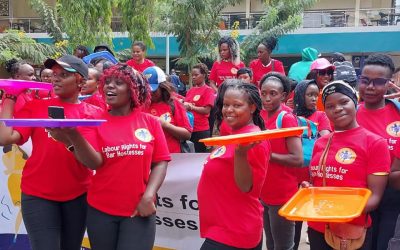FOOTPRINTS painted in bright colours on the floor pass through the bustle of the Themba Lethu clinic in Johannesburg. They lead to a room where every week dozens of men are circumcised. Heterosexual men who get the snip cut their chances of contracting HIV by more than half, since the foreskin is delicate and tears easily. In South Africa, the country that has the world’s largest number of HIV-infected people, such initiatives can save a lot of lives.
Even more important has been a huge expansion in the number of infected people receiving antiretroviral drugs. These not only keep people alive but also suppress the virus, making its carriers less contagious. In September South Africa became one of the first African states to adopt a “test and treat” protocol whereby anyone infected with the virus can get the drugs immediately, instead of waiting until the immunological symptoms of full-blown AIDS appear. By this time the patient may have infected other people.
Some researchers predict that several African countries will soon achieve “epidemic control”, meaning that fewer people are newly infected each year than die of the disease. New data from the American President’s Emergency Plan For AIDS Relief (PEPFAR), a programme launched by George W. Bush in 2003 under which more than 11m people now get treatment, suggests just how close that goal may be. In hard-hit countries, such as Zimbabwe and Zambia, the rate of new infections has more than halved. The prevalence of HIV (ie, the total proportion of the population who carry the virus) has also fallen sharply, though it remains horribly high.
The number of infants infected by their mothers in the womb or via breastfeeding fell by half between 2010 and 2015. In South Africa infected mothers now pass on the virus in only 2% of cases, compared with 45% among infected mothers who don’t get the drugs.
Yet far less progress has been made among the young—and half of sub-Saharan Africans are younger than 19. With such a large cohort of youths starting to have sex, the total number of people with HIV is likely to rise even if the rate of new infections falls. Worryingly, efforts to reduce the spread of HIV are failing among young people and, in particular, among young women.
PEPFAR surveys show that, whereas three-quarters of Zimbabweans know whether or not they are infected (and almost 90% of those who know they are ill are being treated), only half of those under 24 know their HIV status. Girls and young women, many of whom have unsafe sex with richer, older men, are 14 times likelier to contract HIV than young men are. Girls who drop out of school are even more likely to become infected.
The new data suggest that Africa is on the cusp of beating back HIV. But to do so it will have to redouble its efforts to educate, test and treat more people. It would also help if more girls stayed in school, and if faster economic growth gave more young women the jobs and independence that might make sugar daddies’ offers less tempting.
http://www.economist.com/news/middle-east-and-africa/21711046-among-young-numbers-are-still-rise-report-shows-hiv



